Mastering Drain Unclogging: Effective Solutions


Intro
Clogs are an inevitable part of home maintenance and can lead to more significant plumbing issues if neglected. Understanding the reasons behind clogged drains can help homeowners take necessary steps to avoid them. This article delves into effective methods for unclogging drains and offers practical insights for maintaining optimal drainage systems.
Identifying Causes of Clogs
Before addressing a clog, it’s important to understand what typically causes them. Common culprits include:
- Hair
- Food residue
- Soap scum
- Grease and oil
- Tree roots in pipes
Realizing these factors allows homeowners to address and prevent clogs before they escalate.
Home Solutions for Unclogging Drains
There are various methods to unclog drains, many of which utilize simple household items. Here are some effective remedies:
Boiling Water
One of the simplest techniques, boiling water, can dissolve grease and residue. Just boil water and pour it directly down the drain. Repeat if necessary.
Baking Soda and Vinegar
A well-known combination, baking soda and vinegar can break down organic matter. Start by pouring half a cup of baking soda followed by half a cup of vinegar. Cover the drain with a cloth and wait for 30 minutes. Then, flush with boiling water.
Plumber's Snake
For more stubborn clogs, a plumber's snake is an effective tool. This flexible device can reach deeper into pipes to dislodge blockages. Insert it into the drain, rotate, and pull it out, taking any debris with it.
"Regular maintenance and prompt attention to clogs can help keep your plumbing system healthy and functional."
Chemical Cleaners
While mechanical methods are often safer for the plumbing system, chemical drain cleaners can provide a quick fix. Products like Drano are effective but should be used with caution. Always read instructions and take protective measures.
Preventative Strategies
Maintaining clear drains is as vital as unclogging them when they fail. Here are several strategies to promote optimal drain health:
- Regular Cleaning: Schedule routine cleanings of all drain systems.
- Use Drain Screens: Prevent hair and food from entering drains.
- Avoid Pouring Grease: Dispose of grease in a container instead of the sink.
- Flush with Hot Water: Regularly pour hot water down drains to prevent buildup.
By implementing these preventative measures, homeowners can minimize the risk of clogs.
Summary
A variety of methods exist to unclog drains effectively, from simple household remedies to mechanical tools. Understanding the causes of clogs and adopting preventative strategies can greatly contribute to maintaining a healthy plumbing system. Keeping drains functioning smoothly not only improves daily life but also adds to the overall value of the home.
Understanding Drain Clogs
Understanding drain clogs is essential for effective home maintenance. Drain clogs can disrupt daily routines, lead to unpleasant odors, and cause potential damage to plumbing systems. Recognizing how clogs form helps in both prevention and intervention strategies. This section outlines the common causes of drain blockages and signs that indicate a clog may be present.

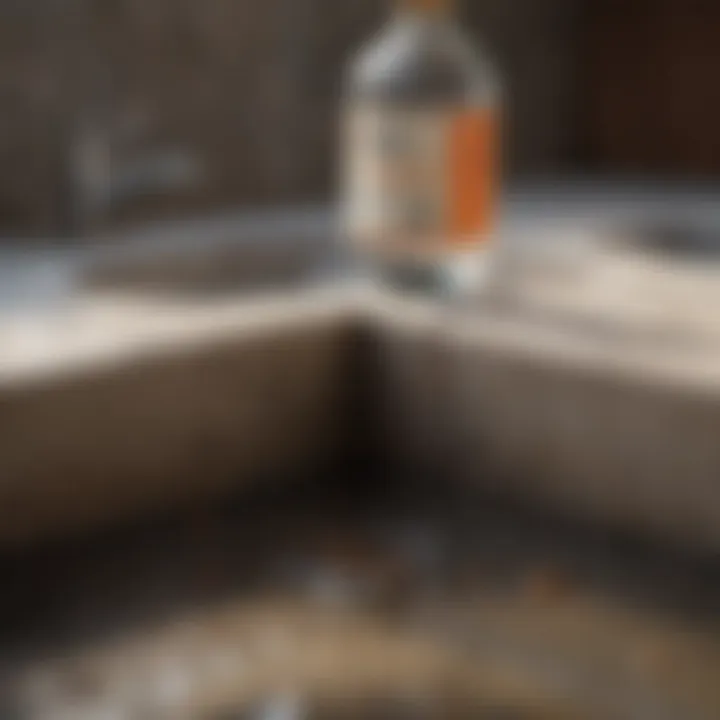
Common Causes of Drain Blockages
Several elements contribute to drain blockages. Hair is a leading cause, especially in bathroom sinks and showers. It tangles with soap scum and becomes a dense mat that is hard to dislodge. Food particles and grease are common in kitchen drains. Over time, accumulations of these substances create thick barriers in pipes.
Additionally, foreign objects can cause sudden clogs. Items like toys, toiletries, and even small utensils may accidentally be flushed down toilets or washed away in sinks. Tree roots can also infiltrate underground pipes, leading to significant blockages that require professional intervention. Identifying these causes can allow for focused preventive actions and quicker responses when blockages occur.
Signs of a Clogged Drain
Recognizing the signs of a clogged drain is vital for timely action. One primary indication is slow drainage; if water does not flow smoothly, a blockage may be forming. Unpleasant odors can also signal trouble, often stemming from stagnant water or decomposing material within the pipes.
Another warning sign is recurring backups. When drains frequently overflow or back up, it suggests a persistent problem. Gurgling sounds from drains indicate air being trapped in the system, which can be a precursor to a major clog. Understanding these signs is crucial in maintaining a functional plumbing system and addressing clogs before they escalate into more severe issues.
Prevention Techniques
Effective prevention techniques play a fundamental role in maintaining draining systems and minimizing the occurrence of clogs. Preventing drain blockages is often more advantageous than trying to resolve them post-factum. This section discusses the importance of preventive practices, detailing strategies that can save time, money, and frustration in the long run.
Regular Maintenance Routines
Implementing regular maintenance routines is essential for keeping drains functioning efficiently. Over time, debris such as hair, soap residue, and grease can accumulate, leading to serious blockages.
To effectively prevent clogs, consider the following best practices:
- Scheduled Cleanings: Regularly inspect and clean drains, especially in high-usage areas like kitchens and bathrooms. Aim for at least once a month.
- Hot Water Flush: Periodically pouring hot water down the drain can help dissolve grease and prevent buildup.
- Strainers or Screens: Installing strainer baskets in sink drains will catch debris before it enters the plumbing system. Make sure to clean these regularly.
- Check for Leaks: Regularly inspect plumbing for any leaks that could lead to unexpected clogs or damage.
Engaging in these routines not only prevents clogs but also facilitates a longer lifespan for your plumbing system.
Items to Avoid Putting Down the Drain
Awareness of what can and cannot go down the drain is crucial in preventing clogs. Some common household items can easily lead to blockages. The following list identifies items to avoid:
- Grease and Oil: These substances can solidify and trap other debris, leading to a severe blockage.
- Food Waste: Even small bits can accumulate over time. Always dispose of food scraps in the trash or compost instead.
- Paper Products: Items like paper towels or feminine hygiene products do not disintegrate easily and can become stuck in the pipes.
- Hair: Hair is a primary cause of bathroom clogs. Avoiding letting hair fall into the shower drain is essential.
- Chemicals: Strong chemicals can damage your plumbing and create further complications.
Being mindful of what is allowed to go down the drain can drastically reduce the need for professional intervention and expensive repairs.
"Preventing drain clogs before they happen is a proactive approach that pays off in the long run."
In summary, employing effective prevention techniques and being cautious about what enters your drainage system can significantly minimize the likelihood of clogs. The implications of good practices are enriching for homeowners, promoting the health of plumbing systems and conserving resources.
Household Remedies
Household remedies are often the first line of defense when faced with a clogged drain. These methods are not only cost-effective but can also be rather simple to execute. Many of these remedies rely on common household items that everyone typically has on hand. They provide an eco-friendly option, steering away from harsh chemicals that can harm plumbing systems and the environment. Homeowners don’t usually need specialized skills to implement these methods, making them accessible for anyone.
When utilizing household remedies, it's crucial to understand how these ingredients work and their effectiveness in dissolving or dislodging the blockage. Many of these approaches are safe for regular use and can prevent the formation of clogs in the first place, offering both immediate relief and long-term benefits.
Using Boiling Water
One of the most straightforward methods to unclog drains is using boiling water. This technique is effective for various types of clogs, particularly those caused by grease or soap buildup. Hot water can dissolve the offending materials, allowing them to flow free again. It’s simple: just boil a kettle of water and pour it down the drain in stages, giving it time to work through the blockage.
However, it is important to note that boiling water may not be suitable for all types of pipes. For instance, PVC pipes can be susceptible to warping if exposed to extreme heat. Therefore, homeowners should check what kind of plumbing is in use before attempting this method. Generally, boiling water is a good starting point for managing minor clogs without the need for chemicals.
Baking Soda and Vinegar Method
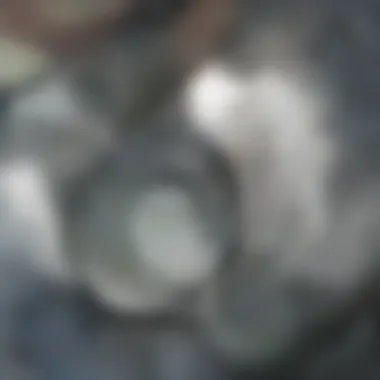
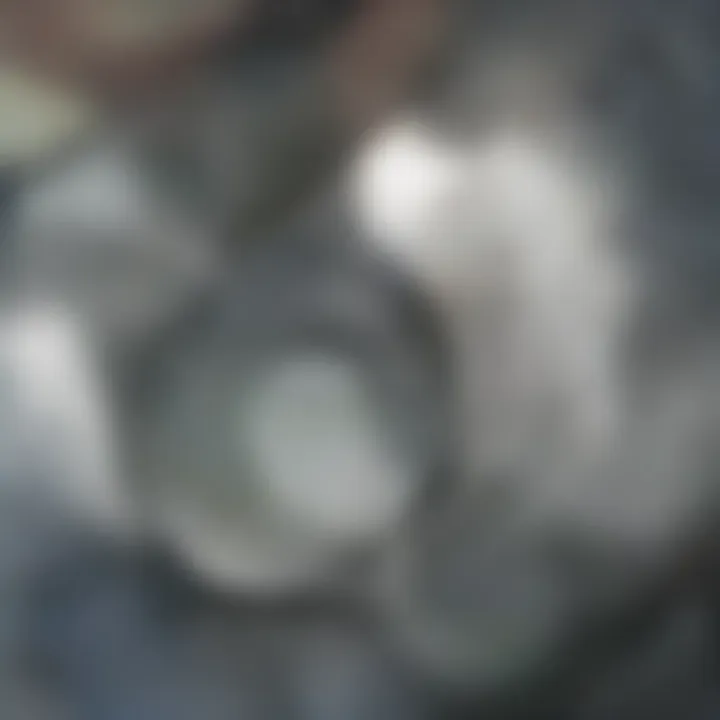
The baking soda and vinegar method is a popular household remedy. This technique combines two common ingredients to create a chemical reaction that can help break down clogs. First, you pour half a cup of baking soda down the drain, followed by half a cup of vinegar. The mixture will foam and bubble, working its way through the blockage.
After about 30 minutes, flush the drain with hot water. This method is particularly effective for organic matter and is safe for all types of pipes. Both ingredients are non-toxic, making it a great option for those concerned about chemical exposure in their homes. Additionally, this remedy can help deodorize the drain, leaving it fresh.
"Baking soda and vinegar create a fizzy reaction that can help dislodge minor clogs."
Salt and Baking Soda Combination
Another effective household remedy involves using a combination of salt and baking soda. This mixture capitalizes on the abrasive quality of salt and the chemical properties of baking soda. Start by pouring half a cup of baking soda followed by half a cup of salt down the drain. Let it sit for about 15 minutes.
Next, flush the drain with hot water. The salt can help scour and clear the pipes while the baking soda can neutralize any odors. This method is particularly useful for sediment build-up and can be repeated regularly as a preventative measure. Both salt and baking soda are inexpensive, which makes this approach appealing for ongoing drain maintenance.
Chemical Solutions
Chemical solutions play a critical role in addressing drain clogs that resist simpler methods. Many homeowners turn to these options when traditional remedies, such as plungers or baking soda, fail to yield results. The effectiveness of chemical drain cleaners lies in their ability to dissolve various materials that hinder flow, such as grease, hair, and soap scum.
Using chemical cleaners can be a quick fix that cuts down the time and effort spent on more labor-intensive methods. However, understanding the types and proper use of these chemicals is essential, as some can be hazardous or damaging to pipes.
Types of Chemical Drain Cleaners
Different chemical drain cleaners are available on the market. Each type has its specific formulation and intended use:
- Acid-Based Cleaners: These cleaners are potent and can effectively break down tough clogs caused by organic materials. However, they can be highly corrosive, so one must use them with caution.
- Alkaline Cleaners: Alkaline solutions, which often contain sodium hydroxide, excel at dissolving grease and fats. Their caustic nature makes them effective but also requires careful handling.
- Enzyme Cleaners: These are the most environmentally friendly options. They use natural bacteria and enzymes to break down organic waste over time. While they are safer for the plumbing system, they may take longer to produce results compared to traditional chemical cleaners.
- Foaming Drain Cleaners: They expand when applied, allowing the product to reach more of the clog. They often combine different chemicals to tackle a variety of blockage types.
Employing these products involves understanding the instructions and effectiveness for each clog type. It’s also wise to follow with hot water to flush away the remnants.
Safety Considerations for Using Chemicals
Using chemical drain cleaners necessitates awareness of safety protocols to prevent accidents:
- Read Labels: Always read the manufacturer's guidelines before use. Each cleaner has specific instructions and safety warnings that you should follow.
- Wear Protective Gear: Suitable gloves and goggles should be worn to protect against splashes. Skin or eye contact with chemicals can lead to serious injuries.
- Ventilation: Ensure adequate ventilation in the area where the chemical is used. Some products emit fumes that may be harmful if inhaled.
- Avoid Mixing: Never mix different chemical cleaners. Combining products can create dangerous reactions, potentially resulting in toxic gases or explosions.
- Proper Disposal: Follow guidelines for disposal. Many chemicals are hazardous to the environment and require special handling when thrown away.
"Safety is paramount when dealing with chemical solutions for drain cleaning. Always prioritize personal and environmental safety."
Understanding these safety measures will help ensure that chemical methods of unclogging drains are effective without posing risks to health or property.
Mechanical Methods
Mechanical methods are essential when it comes to unclogging drains. While chemical solutions can effectively break down certain blockages, they may not address more stubborn clogs caused by solid objects or built-up debris. Using mechanical methods not only allows for direct intervention but also minimizes the risk of damage to plumbing systems. Techniques such as plunging and snaking are highly effective and can result in immediate unclogging without the lengthy wait times often associated with chemical treatments.
Using a Plunger Effectively
The plunger is a fundamental tool in drain maintenance. Its simplicity belies its effectiveness. When properly utilized, it can dislodge clogs quickly. Here are key steps to ensure optimal use:
- Select the Right Plunger: Ensure you have a cup plunger for sinks and a flange plunger for toilets. The right type enhances suction and pressure.
- Seal the Area: Cover overflow openings or other drains nearby to focus the pressure on the clog.
- Plunge Firmly: Position the plunger over the drain. Push down firmly, then pull up quickly to create a vacuum. Repeat this 6-10 times.
"The effective use of a plunger can resolve about 90% of common clogs without requiring advanced tools."
If the drain clears, let it run with hot water to flush any remaining debris. However, if the clog persists, it may need a more aggressive approach like using a drain snake.
Employing a Drain Snake
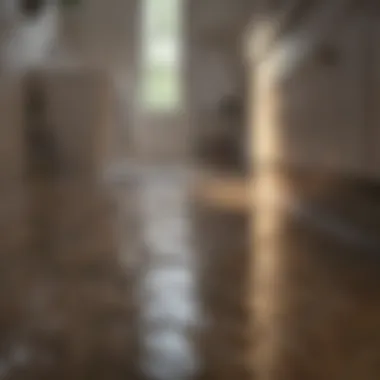
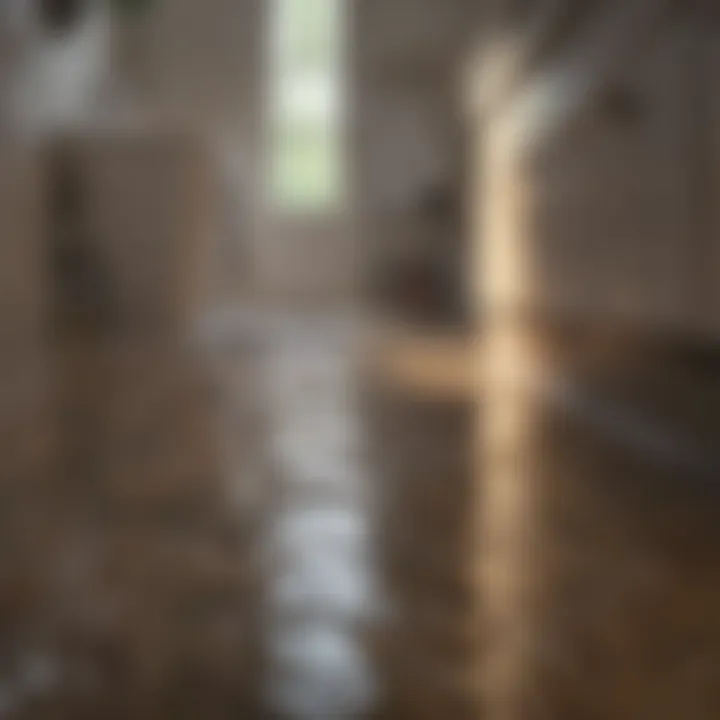
The drain snake, also known as an auger, is a versatile tool suited for tackling deeper clogs. It can reach obstructions that plungers cannot. Here are some tips to use it effectively:
- Choose the Correct Snake: For household use, a 25-foot snake is typically sufficient. For more severe blockages, longer options are available.
- Insert with Care: Feed the snake into the drain slowly until you feel resistance, indicating the location of the clog.
- Twist and Push: Turn the handle and gently push to break through the blockage. Once the clog is cleared, retract the snake carefully.
Using a drain snake often resolves stubborn blockages, but it requires some patience and technique. Regular use can also prevent future clogs, keeping your plumbing in good condition.
Professional Drain Cleaning Services
In some instances, DIY methods may not suffice. Professional drain cleaning services offer advanced solutions and specialized equipment. Homeowners should consider this option for the following reasons:
- Expertise: Professionals can identify underlying issues, including tree root intrusion or severe buildup.
- Advanced Tools: Equipment such as hydro-jetting can clear clogs without damaging pipes.
- Long-Term Solutions: Experts can offer preventative tips tailored to your home’s plumbing needs.
Investing in professional help is often seen as a last resort. Nonetheless, their services can prevent small issues from escalating into major plumbing disasters.
Aftercare for Unclogged Drains
Ensuring that drains remain clear after unclogging is as important as the initial unclogging process itself. Aftercare plays a crucial role in maintaining not only the functionality of your drainage system but also its longevity. Proper aftercare can avert future clogs, which can lead to costly repairs and disruptions. Therefore, implementing these practices is beneficial and essential for homeowners and design enthusiasts alike.
Testing Drain Functionality
After unclogging a drain, the first step is to test its functionality. This involves running water through the drain to observe its flow. Key indicators of a successful unclogging include rapid drainage, absence of gurgling sounds, and no lingering odors.
- Run Cold Water: Start by allowing cold water to flow through the drain for a couple of minutes. This helps remove any residual debris.
- Observe the Drainage Process: Watch for any standing water or slow drainage, which indicates that additional measures might be necessary.
- Check for Odors: Any unusual smells could indicate leftover material that might cause future clogs.
- Use a Drain Cleaner: If satisfied with the flow but want to ensure continued cleanliness, consider using a biodegradable drain cleaner instead of harsh chemicals.
By proactively testing the drain, homeowners can take immediate action if problems arise, ensuring the plumbing system stays in optimal condition.
Long-Term Maintenance Strategies
Long-term maintenance is essential for sustaining the integrity of the plumbing system. Adopting routine practices can significantly reduce the likelihood of recurring clogs and extend the life of your drains. Here are effective strategies to consider:
- Regular Cleaning Schedule: Set a reminder to clean drains every few months using natural solutions like vinegar and baking soda. This gentle approach keeps drains clear without harmful chemicals.
- Use Drain Screens: Investing in drain screens can prevent debris, hair, and food particles from entering the drainage system, which significantly reduces clogging chances.
- Hot Water Flushes: Regularly flushing drains with hot water can help dissolve any buildup of grease or soap scum. Make this a monthly habit to maintain clear pathways.
- Educate Household Members: Ensure all household members understand what should and should not go down the drain. This awareness can greatly decrease unwanted blockages.
Implement these long-term strategies to nurture your drainage system actively. This not only enhances the efficiency of plumbing but also protects from potential damage in the future.
Remember: Consistency in maintenance is key to preventing major plumbing issues.
Ending
Summary of Recommended Practices
To effectively maintain fluid drainage systems, several practices emerge as crucial:
- Regular Maintenance: This encompasses routine checks for non-food items in kitchen sinks and hair in bathrooms.
- Chemical Solutions: Utilizing products like Liquid Plumr or Drano can assist in managing stubborn clogs, but caution is essential due to the harsh nature of these substances.
- Mechanical Methods: Options like plungers and drain snakes are effective for manually tackling a blockage.
Engaging in these practices not only assists in unclogging but also minimizes future blockages. Additionally, investing time into educating one’s self about proper drain maintenance serves as a long-term solution to ensure clarity through pipes.
Encouragement of Preventative Measures
Preventative measures prove highly effective in sustaining clear drains. It is crucial to be mindful of what goes down kitchen and bathroom drains. Some significant tips include:
- Use Screens: Installing screens over drains in sinks and showers can catch debris before it enters the pipe.
- Bi-Annual Cleanouts: Conducting a thorough cleaning of the drains twice a year is a proactive approach.
- Awareness of Drain Materials: Avoiding certain materials such as grease, coffee grounds, and heavy oils prevents the formation of clogs before they initiate.
Taking these steps contributes to a more efficient plumbing system and prevents the inconvenience of clogged drains. Households can maintain optimum functionality, ensuring that drainage is as smooth as possible.
"An ounce of prevention is worth a pound of cure."
Ultimately, understanding and integrating these preventive measures will not only enhance drainage systems but also preserve the integrity of one’s home infrastructure.







